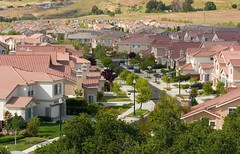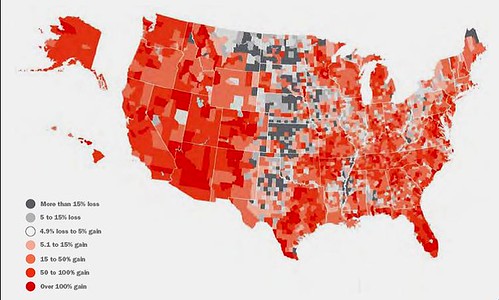How much the US will grow, and where: numbers and a map

Posted May 12, 2008 at 12:50PM
 The housing market may be in a slump right now - in part because we've been building too much sprawl - but over the next 25 years or so the US is going to experience rapid population growth, and the construction and development to go with it. I've mentioned before the work of Chris (Arthur C.) Nelson of Virginia Tech, perhaps the country's leading researcher on building trends projected into the future.
The housing market may be in a slump right now - in part because we've been building too much sprawl - but over the next 25 years or so the US is going to experience rapid population growth, and the construction and development to go with it. I've mentioned before the work of Chris (Arthur C.) Nelson of Virginia Tech, perhaps the country's leading researcher on building trends projected into the future.
Chris projects the following changes between 2005 and 2030, nationally:
- Population growth: 70 million (roughly twice the current population of California, or the current population of the United Kingdom and the Republic of Ireland combined)
- Job growth: 40 million
- New households: 32 million
- New and replacement homes: 50 million (because buildings deteriorate, a portion of our current stock must be rebuilt or replaced each year)
- New and replacement nonresidential space: 78 billion square feet
The growth will not be distributed evenly, which means that some regions will not experience its benefits while others will experience the benefits but will also have to bear a greater share of the burden. Consider the map below, which comes to us courtesy of the University of Pennsylvania School of Design and the America 2050 Initiative:
The map is delineated by county. The deeper the red color, the more rapidly a particular county is expected to experience population growth. The deepest red counties will double in population by 2050. The gray counties are projected to lose population, and the darker the gray the more rapid the loss is likely to be. The darkest gray areas will lose 10% or more of their current population.
How we accommodate this growth matters a great deal to the environment and to the maintenance of our quality of life. The areas in red need to get their act together. As I will discuss in a future post, this will require a new approach to environmental thinking - one that may not come naturally to regulatory agencies or even to groups like NRDC.
